This recipe provides a 100% vegetarian approach to Native Jollof, a unique take on Jollof Rice from Nigeria.
When most people think about Jollof rice, they think about a collection of spicy tomato-based rice dishes that are found across West Africa. However, across this same region, you find more localized and unique versions of “jollof rice”. These recipes use traditional ingredients that are unique to certain regions or highlight their unique culinary culture. Native Jollof is one of them — a variety of jollof rice found in small pockets of West Africa like Nigeria, that is unlike regular Jollof rice, but equally as delicious.
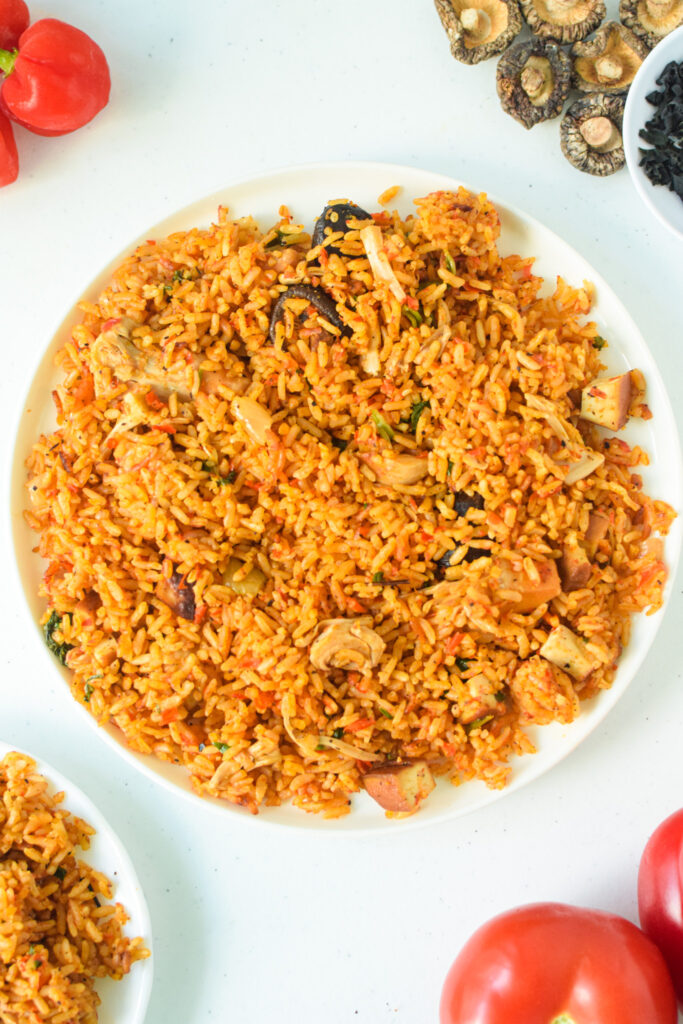
What is Native Jollof Rice
Native Jollof Rice is a one-pot dish using indigenous spices and herbs to create a delicious rice dish. The base of the rice dish uses more local ingredients like red palm oil, fewer tomatoes, fermented locust beans, pepper, and local varieties of fish cooked with white rice. Many parts of West Africa have their own spin on this dish, with Ivory Coast and Nigeria being places where it is more commonly made. In Ivory Coast, riz villageois (as it is known), is made with palm oil, peppers, tomatoes, dried fish and smoked fish. For this reason, it is also known as riz au gras poisson fumé.
However, when you hop to the Nigerian side, Native Jollof rice is riz gras villageois and more. Traditional herbs like scent leaves are used to flavor the dish. The dish uses more local protein sources as well as local greens to give a bowl of rice with a ton of vibrant yellow/orange and green colors.
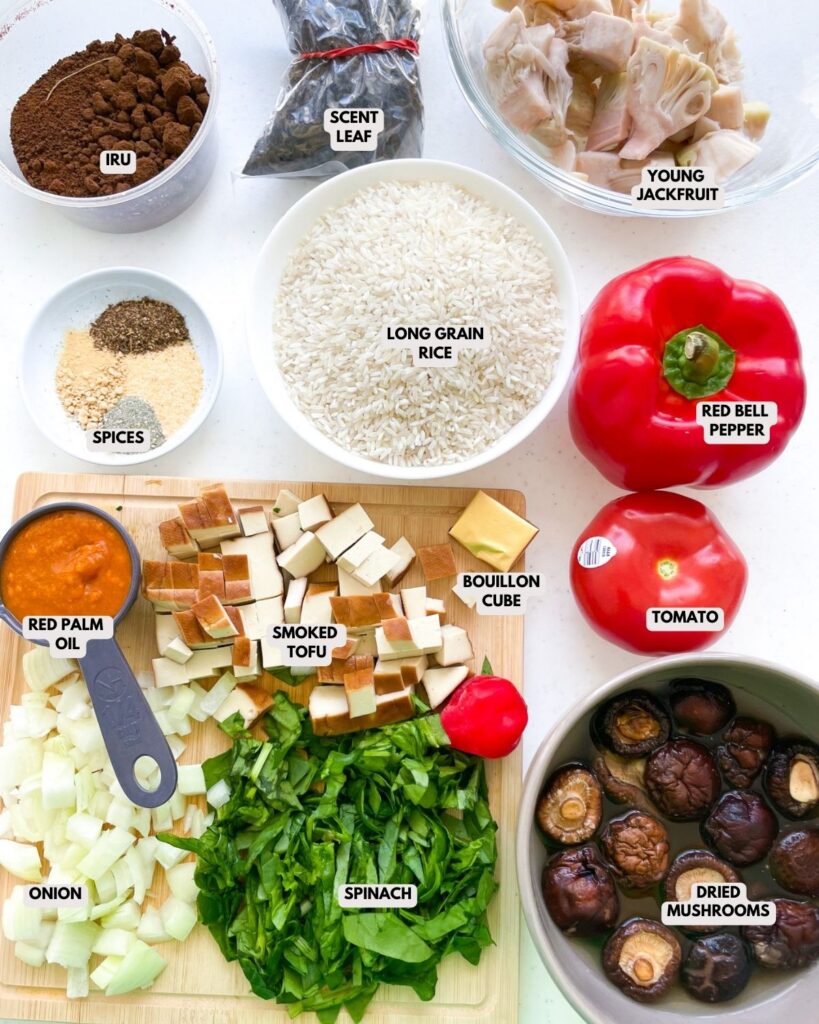
What you will need to make Vegetarian Native Jollof
- Stew Base: Since we are going the Nigerian route, the stew base will consist primarily of peppers. For the color, I am using red bell pepper, tomato, and habanero for a spice kick. In addition, onions and palm oil will give the dish color and a subtle sweetness.
- Spices: Spices are always customizable but the necessary ingredients are fermented locust beans (iru) and some type of dried fish substitute, which in our case is a mix of nori and mushroom powder. I also used a mix of garlic and onion powder as well as Cameroon pepper and vegetable bouillon cube to add savoriness to the dish.
- Herbs: For this recipe, I am using dried scent leaves (also known as African Basil) for a more local flavor. It smells very similar to oregano when dried.
- Add-Ins: To add texture to the dish, I used a mixture of rehydrated mushrooms, young jackfruit, and smoked tofu.
- Greens: Traditionally more local leaves are used like uziza leaves or ugu leaves to add additional flavor, but spinach works perfectly for this dish.
- Rice: Long-grain rice is all you need
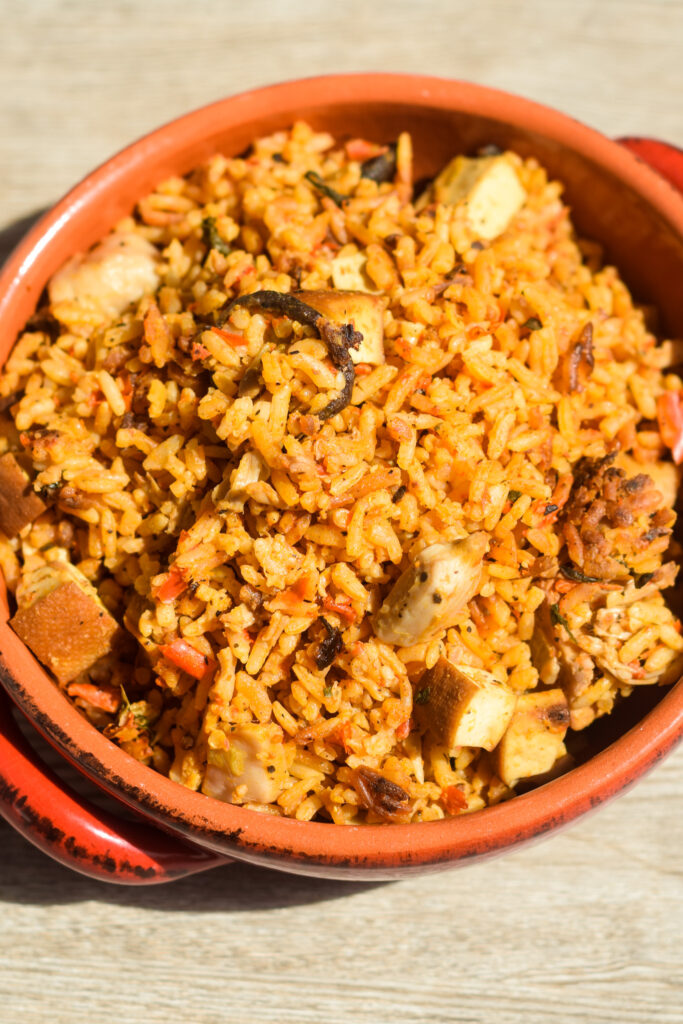
How to make the perfect Vegetarian Native Jollof Rice
- Cook your stew base: Sauté onions in red palm oil and red stew base till oil starts to separate to the top
- Add in your seasoning: Add in your seasonings to flavor the stew.
- Include your add-ins: Layer in your add-ins like jackfruit, tofu, and mushroom.
- Cook the rice: Add your rice and broth and let it cook at low till the rice is tender
What Can I Eat with Native Jollof Rice
- You can eat this alone as it has everything you will need in a meal
- You can check out my compilation of Tofu side dishes you can enjoy with this dish
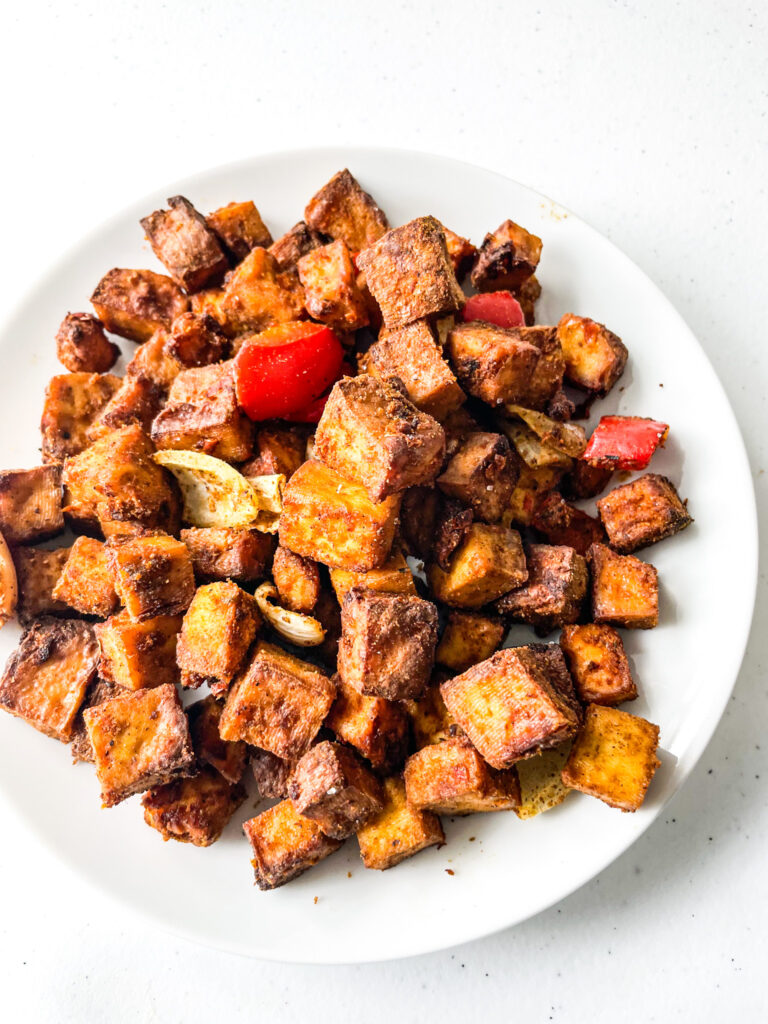
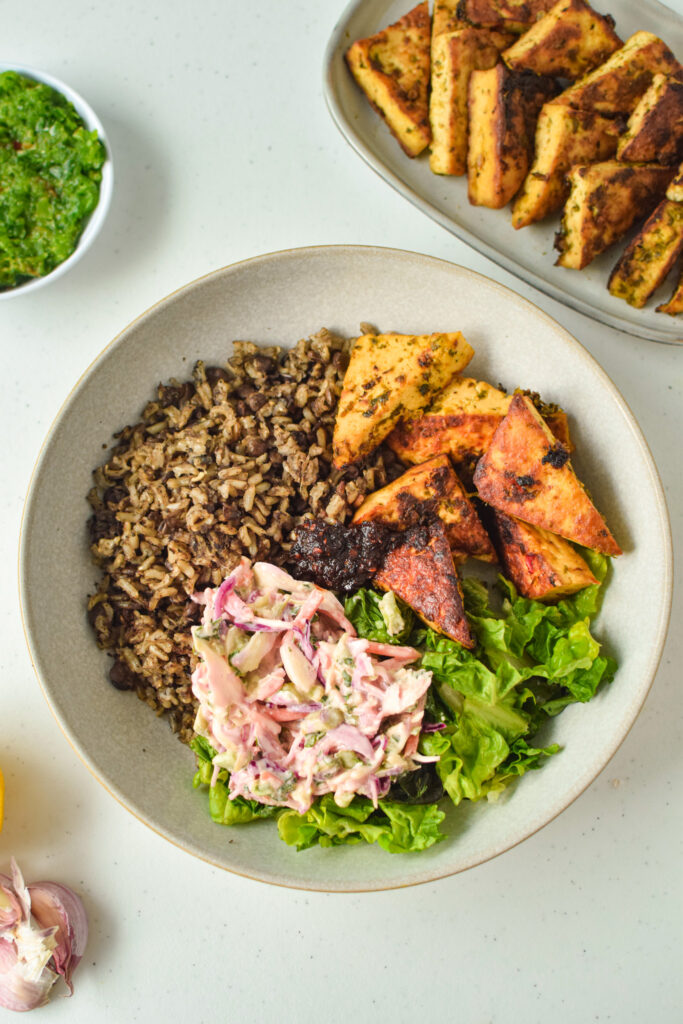

FAQ+ Substitutions
- Can I use another oil? You might be able to use coconut oil but palm oil is really essential for this dish
- I do not have fermented locust beans, are there any alternatives? Fermented locust beans are truly one of a kind, I, unfortunately, do not have any alternatives to recommend.
- I do not have scent leaf, are there any alternatives? Dried oregano works well.
- Can I use other add-ins instead of jackfruit, tofu, and mushroom? You are welcome to use anything you like.
- Can this be made with brown rice or another grain, instead of white rice? Technically it can but it might require more water to properly cook.
Vegetarian Native Jollof
Ingredients
- 1/4 cup red palm oil
- 1 medium onion chopped
- 2 tsp dawa dawa powder or 1 tbsp dry dawa dawa — you might have to soak it first to rehydrate it
- 1 scotch bonnet pepper or habanero works too
- 1 1/2 red bell pepper
- 1 tomato
- 2 tsp garlic powder
- 2 tsp onion powder
- 1 tsp cameroon pepper can also use cayenne pepper
- 2 tsp nori mix please see my shito recipe to learn how I make this mix
- 1 cup of dried mushrooms soaked in water any dried mushroom works
- 1 vegetable bouillon I used the Go Bio Organic Mushroom Bouillon Cube
- 1 can of young jackfruit
- 2 tsp dry scent leaf can sub with 1.5 tsp of oregano or use 1/4 cup of fresh scent leaf
- 1 pack of sunrise soya smoked tofu can use any tofu of choice
- 2 cups of long grain rice washed
- 2.5 cups of water or vegetable broth
Instructions
- Start by heating the red palm oil in a pot at medium heat. It behaves like coconut oil so when it is cold it is solid and when it is warm it is liquid
- Once the oil is melted, add in your chopped onions and sauté till it is soft (about 5 minutes)
- Next, add in your fermented locust beans and cook in the onion mixture for a few minutes (2-3minutes)
- Mix in your blended red bell pepper, habanero/scotch bonnet, tomato mixture and let it cook for 10 minutes
- Add in your dried spices (garlic powder, onion powder, cameroon pepper, nori mushroom mix, and bouillon cube) and mix well
- Since I am using dried mushrooms, I added them into the stew too so it can continue to rehydrate and take on the stew flavour.
- I let the stew simmer for 10 -15 mins to cook through and reduce, stirring periodically. The stew is ready when the oil starts to separate to the top.
- While it was simmering, I made sure to wash my jackfruit very well to get the brine taste out.
- Once the 10-15 mins is up, I added in my jackfruit and then crumbled my scent leaf into the pot. I also made sure to check for salt and seasoning so that the stew is well-seasoned.
- Right after, I mixed in my smoked tofu and then added my rice.
- I mixed everything well and poured in my water/stock. Give the mixture a final taste to ensure that you can taste the seasoning; cover the pot and let it come to a boil.
- Once it has boiled, reduce the heat to low and let it cook for about 15 minutes. Then give it a good stir.
- At this point, there is no more visible water. Cover the pot with parchment paper or aluminum foil and let the rice continue to cook for about 15-20 mins or until the rice is tender. Please do not add more water otherwise it will be mushy.
- When the rice is tender, turn off the heat, sprinkle in your chopped spinach and cover the pot to let the spinach steam.
- Once the spinach has wilted the rice is ready
- Serve the rice with any choice of protein or enjoy on its own.


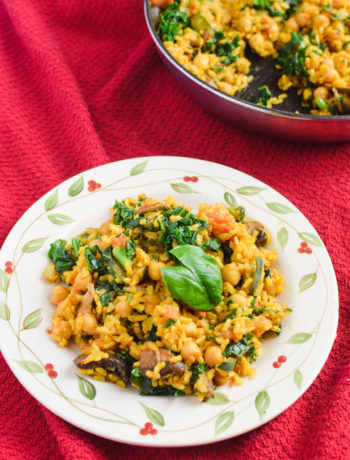
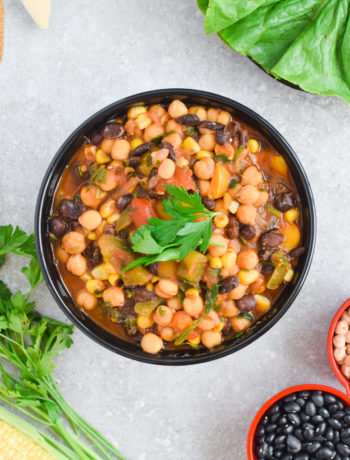
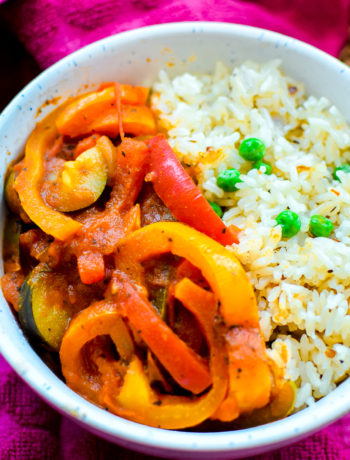
No Comments